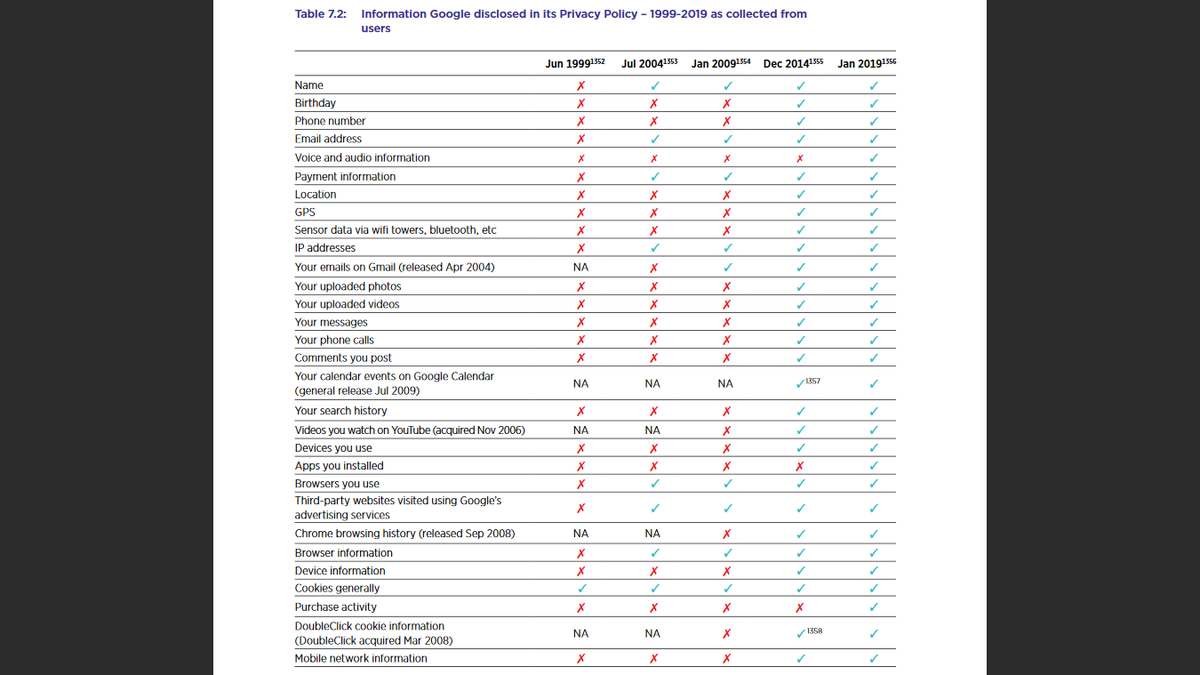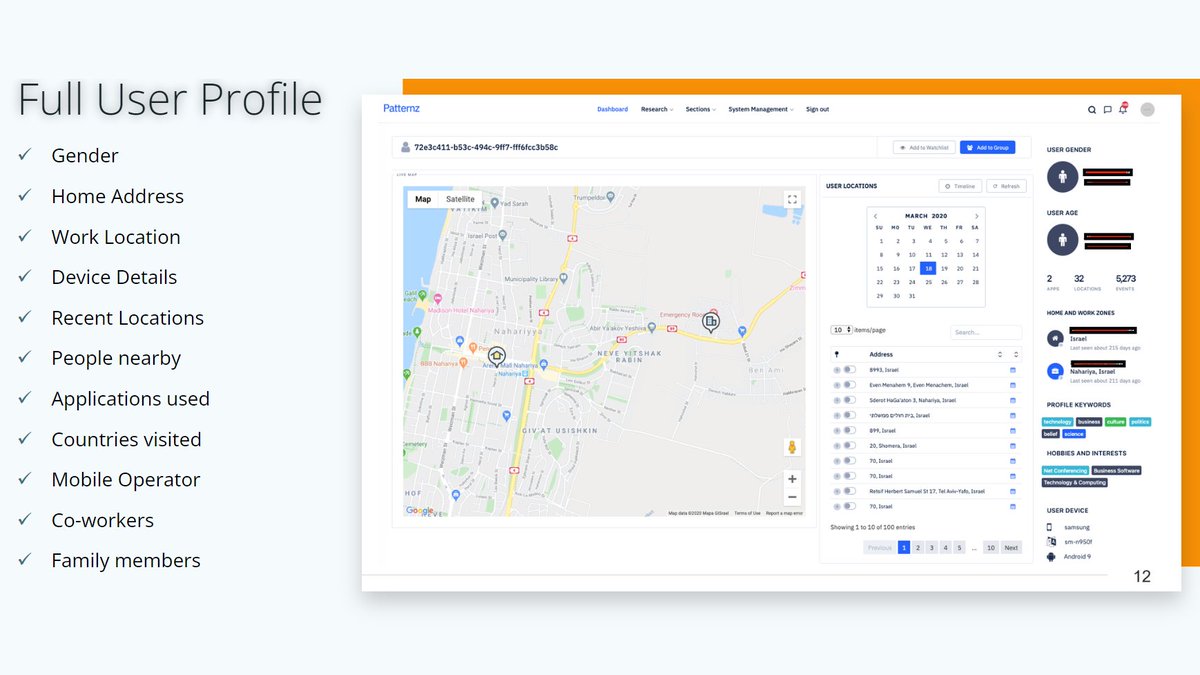Google data collection as disclosed in their privacy policies 1999-2019, according to the Australian Competition & Consumer Commission's 'Digital Platforms Inquiry' report. 

Here's the report: accc.gov.au/focus-areas/in…
h/t @wavesblog, read her thread on the report:
h/t @wavesblog, read her thread on the report:
https://twitter.com/wavesblog/status/1154751443649355776
@wavesblog Btw. In 2012, Google merged 60 product privacy policies into one and started to openly combine user data across different services.
...perhaps the single most important 'policy' change that made Google the pervasive surveillance machine it is today: computerworld.com/article/250035…
...perhaps the single most important 'policy' change that made Google the pervasive surveillance machine it is today: computerworld.com/article/250035…
@wavesblog The second most important of Google's 'policy' changes was perhaps the addition of this single sentence highlighted in green in 2016.
Or, as Slate wrote in October 2016: "Google changed a major privacy policy four months ago, and no one really noticed" (slate.com/technology/201…).
Or, as Slate wrote in October 2016: "Google changed a major privacy policy four months ago, and no one really noticed" (slate.com/technology/201…).

• • •
Missing some Tweet in this thread? You can try to
force a refresh

















